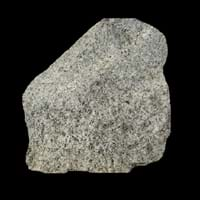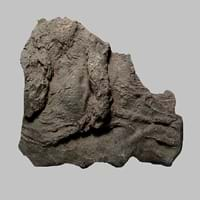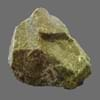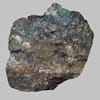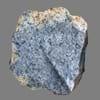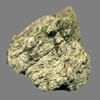Definition
Granodiorite is a coarse-grained intrusive igneous rock containing quartz and plagioclase, and which has composition in between granite and diorite
During the impact melted material forming a breccia containing glass and crystal or lithic fragments together form Suevite rock.
Origin
Unknown
Canada, Germany
Discoverer
Unknown
Unknown
Etymology
From granite + diorite
No etymologies found
Class
Igneous Rocks
Metamorphic Rocks
Sub-Class
Durable Rock, Medium Hardness Rock
Durable Rock, Medium Hardness Rock
Group
Plutonic
Not Applicable
Other Categories
Coarse Grained Rock, Medium Grained Rock, Opaque Rock
Coarse Grained Rock, Opaque Rock
Texture
Granular, Phaneritic
Earthy
Color
Black, Grey, Orange, Pink, White
Black, Brown, Colourless, Green, Grey, Pink
Durability
Durable
Durable
Scratch Resistant
Yes
Yes
Appearance
Veined or Pebbled
Banded
Interior Uses
Bathrooms, Countertops, Decorative Aggregates, Entryways, Floor Tiles, Flooring, Homes, Hotels, Interior Decoration, Stair Treads
Decorative Aggregates, Homes, Interior Decoration
Exterior Uses
As Building Stone, Bridges, Paving Stone, Garden Decoration, Office Buildings, Resorts
As Building Stone, As Facing Stone, Garden Decoration, Office Buildings
Other Architectural Uses
Not Yet Used
Curbing
Construction Industry
As Dimension Stone
As Dimension Stone, Cement Manufacture, for Road Aggregate, Making natural cement, Manufacture of Magnesium and Dolomite Refractories
Medical Industry
Not Yet Used
Not Applicable
Antiquity Uses
Artifacts, Monuments, Sculpture
Artifacts, Monuments, Sculpture
Commercial Uses
Curling, Gemstone, Laboratory bench tops, Tombstones
As a Feed Additive for Livestock, Gemstone, Metallurgical Flux, Source of Magnesia (MgO)
Types
Not Available
Phyllosilicates, Calcite
Features
Available in Lots of Colors and Patterns
Host Rock for Lead
Archaeological Significance
Famous Monuments
Data Not Available
Data Not Available
Famous Sculptures
Data Not Available
Data Not Available
Formation
Granodiorite is an intrusive igneous rock which is very hard, crystalline and is visibly homogeneous in texture and forms by melting of continental rocks.
Suevite is a metamorphic rock consisting partly of melted material, typically forming a breccia containing glass and crystal or lithic fragments, formed during an impact event.
Mineral Content
Amphibole, Biotite, Feldspar, Hornblade, Micas, Muscovite or Illite, Plagioclase, Pyroxene, Quartz
Coesite, Quartz, Stishovite
Compound Content
Aluminium Oxide, CaO, Iron(III) Oxide, FeO, Potassium Oxide, MgO, MnO, Sodium Oxide, Phosphorus Pentoxide, Silicon Dioxide, Titanium Dioxide
CaO, Carbon Dioxide, MgO
Types of Metamorphism
Burial Metamorphism, Cataclastic Metamorphism, Contact Metamorphism, Hydrothermal Metamorphism, Impact Metamorphism, Regional Metamorphism
Burial Metamorphism, Cataclastic Metamorphism, Contact Metamorphism, Hydrothermal Metamorphism, Impact Metamorphism, Regional Metamorphism
Types of Weathering
Chemical Weathering
Not Applicable
Types of Erosion
Chemical Erosion, Glacier Erosion, Wind Erosion
Not Applicable
Grain Size
Medium to Coarse Grained
Coarse Grained
Fracture
Not Available
Uneven
Streak
White
Light to dark brown
Porosity
Less Porous
Less Porous
Luster
Grainy, Pearly and Vitreous
Earthy
Compressive Strength
Not Available
Cleavage
Not Available
Irregular
Toughness
Not Available
Not Available
Specific Gravity
2.6-2.7
2.86
Transparency
Opaque
Opaque
Density
2.6-2.8 g/cm3
2.8-2.9 g/cm3
Resistance
Heat Resistant, Wear Resistant
Heat Resistant
Deposits in Eastern Continents
Asia
China, India, Iran, Saudi Arabia, Sri Lanka, Taiwan, Thailand, Turkey, Vietnam
Not Yet Found
Africa
Angola, Egypt, Madagascar, Namibia, Nigeria, South Africa
Not Yet Found
Europe
Austria, Belgium, Finland, France, Germany, Italy, Norway, Sardinia, Spain, Switzerland, The Czech Republic, Venezuela
England, France, Germany, Great Britain, Netherlands, Sweden, Switzerland, United Kingdom
Others
Not Yet Found
Not Yet Found
Deposits in Western Continents
North America
Canada, USA
Not Yet Found
South America
Not Yet Found
Not Yet Found
Deposits in Oceania Continent
Australia
Not Yet Found
Not Yet Found
All about Granodiorite and Suevite Properties
Know all about Granodiorite and Suevite properties here. All properties of rocks are important as they define the type of rock and its application. Granodiorite belongs to Igneous Rocks while Suevite belongs to Metamorphic Rocks.Texture of Granodiorite is Granular, Phaneritic whereas that of Suevite is Earthy. Granodiorite appears Veined or Pebbled and Suevite appears Banded. The luster of Granodiorite is grainy, pearly and vitreous while that of Suevite is earthy. Granodiorite is available in black, grey, orange, pink, white colors whereas Suevite is available in black, brown, colourless, green, grey, pink colors. The commercial uses of Granodiorite are curling, gemstone, laboratory bench tops, tombstones and that of Suevite are as a feed additive for livestock, gemstone, metallurgical flux, source of magnesia (mgo).
